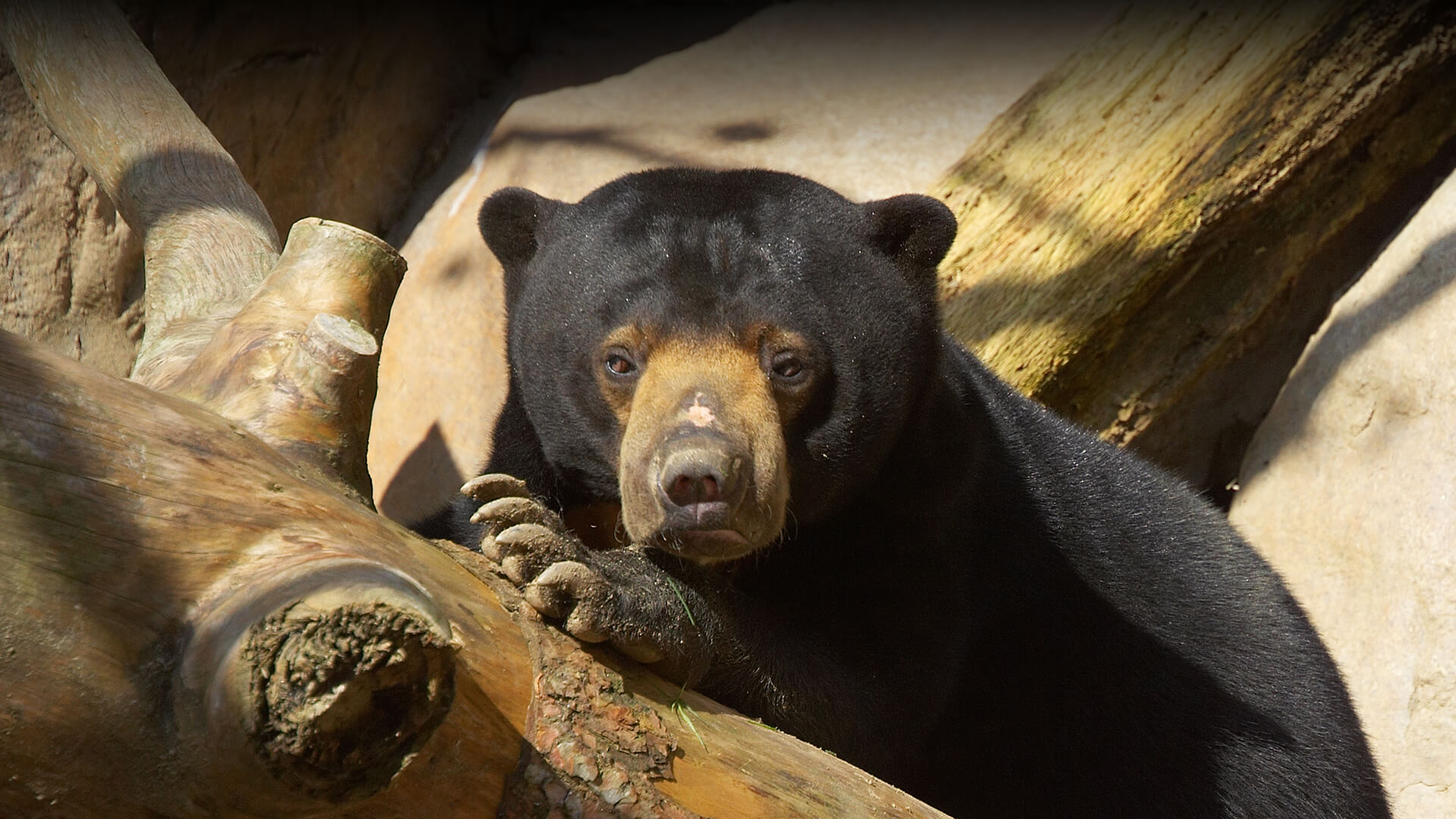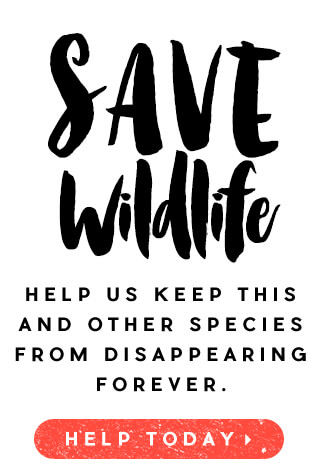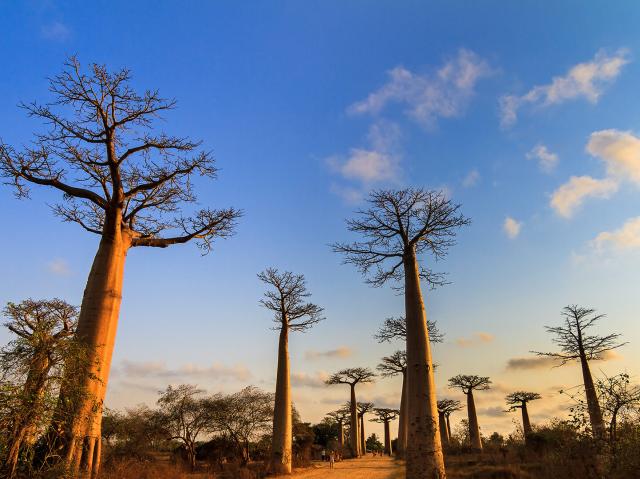
Sun Bear

- CLASS: Mammalia (Mammals)
- ORDER: Carnivora
- FAMILY: Ursidae
- GENUS: Helarctos
- SPECIES: malayanus
- SUBSPECIES: euryspilus (Bornean sun bear), malayanus (Malayan sun bear)

ABOUT
Small but mighty: Sun bears are the smallest of the world's eight bear species, about half the size of American black bears. Their common name comes from the white or yellowish crescent markings on their chest, which many people think looks like the rising or setting sun. Each bear’s crest is unique—like our fingerprints.
A sun bear’s jaws provide a powerful bite force and are often used to tear into trees to get at the burrowing insects beneath the bark. They have a distinctive pigeon-toed walk, an adaptation to their arboreal lifestyle. Like other bears, sun bears have an incredible sense of smell, thought to be several thousand times better than ours.
HABITAT AND DIET
Tree, sweet tree: In the Malay language, sun bears are called basindo nan tenggil, which means “he who likes to sit high.” They certainly live up to that reputation! Sun bears like to make their home in the branches of trees. Their small size, 4-inch-long (10 centimeters) claws, and large paws with hairless soles help them move about with ease high up in trees.
Those branches also make a nice place to build a nest for resting or sunbathing during the day, although in areas undisturbed by people, sun bears are more likely to rest on the ground. Their eyes are more forward-facing than those of longer-snouted bears like polar bears, which is another adaptation thought to aid in climbing.
Sun bears have all the tools necessary to protect themselves. Those claws and canine teeth are handy weapons in a fight. If a predator were to latch on during a struggle, a sun bear can turn in its loose skin and bite its attacker. And even though sun bears live in a hot, humid climate, their short, sleek, dark-brown coats are unusually thick and dense to protect them against twigs, branches, falls, and heavy rain. What’s more, sun bears can move quickly when needed, outpacing more lumbering bears like giant pandas.
Omnivorous sun bears rely primarily on fruit and insects to meet their nutritional needs. Their front paws and long claws rip open trees in search of insects or sap. Other occasional food choices include small birds, fruit, honey, lizards, rodents, and soft parts of palm trees. Their strong jaws and teeth can even open coconuts!
A sun bear’s especially long tongue is perfectly suited for reaching honey and insects inside trees and other tight places. Their appetite for coconuts, oil palms, and other commercial crops can lead to conflict between sun bears and people. Sadly, this conflict is a significant conservation threat, as they are often poached or confiscated for the pet trade.
At the San Diego Zoo, sun bears eat a large variety of fruit, vegetables, roots, and nuts. They also chew on bones and forage for insects like crickets.
FAMILY LIFE
Sun bears don’t have a particular breeding season; in fact, adult female sun bears are the only type of bear known to cycle several times each year. Nests have been observed in leafy vegetation on the ground or in hollow logs. Cubs are born hairless and helpless, unable to hear or smell, and are completely dependent upon their mother for food, warmth, and protection. Mothers sometimes walk upright and carry their babies in their paws or mouth to move them from place to place.
Sun bear cubs can run and play at about 4 to 5 months of age, and are naturally weaned by about 18 months of age. Scientists believe they stay with their mother, however, for about the first two years of life.
Sun bears vocalize using a variety of different sounds. Adult bears make a clucking noise, resembling the sound of a hen, as a typical contact call signaling friendly intent. Aggressive sun bears can bark, growl, and roar like other bears. Cubs hum while nursing and squawk or cry when in need of their mother’s attention.
Sun bears also communicate through scent in various ways. They may anoint themselves with smelly substances like urine, saliva, or food remnants to send a message, attract mates, or mark territory. They will sometimes rub against rocks and trees, a behavior known from other bears to deposit hair and other scent samples for others to investigate. Or, they can also sniff the urine and feces of other sun bears to obtain information about them.
CONSERVATION
Vulnerable: According to the International Union for the Conservation of Nature, sun bears are vulnerable to extinction. It is unknown how many are left, since their secretive nature makes them hard to find, and few studies have focused on these bears. This lack of data currently prevents them from being listed as endangered; however, scientists believe sun bear populations are dwindling rapidly as a result of habitat loss from farming and logging, poaching (both for meat and use in medicines), and even the pet trade. Their appetite for oil palm and other commercial crops has led to conflict between sun bears and people, causing an additional threat.
The population of this rare bear is thought to have declined more than 30 percent in the last 30 years. Although it is illegal to hunt sun bears, laws protecting them are rarely enforced.
San Diego Zoo Wildlife Alliance participates in sun bear conservation through conservation breeding, the study of sun bear behavior and ecology, and international collaborative partnerships. One collaborative project at the San Diego Zoo involved analyzing fecal hormones and collecting behavioral data to learn about reproductive cycling. Our conservation researchers studied sun bear estrous cycles and the reproductive viability of males. We also studied behavioral components of male-female interactions, maternal care, cub development, and the impact of ambient noise on mothers and cubs.
San Diego Zoo Wildlife Alliance continues to work with global partners, including Free the Bears, on sun bear conservation projects, such as the development of an educational curriculum to increase awareness of sun bear needs and status in Asia. San Diego Zoo Wildlife Alliance is also a member of the Roundtable on Sustainable Palm Oil, a collaborative effort directed toward development of sustainable practices for the palm oil industry that will benefit a wide variety of wildlife, including sun bears.
By joining San Diego Zoo Wildlife Alliance as an ally for wildlife, you help save species worldwide.
Sounds
LIFE SPAN
On average, 23 years for females, unknown for males
YOUNG
Gestation: 95 to 100 days
Number of young at birth: 1 or 2 cubs
Age of maturity: 3 to 5 years
Size at birth: 7 to 12 ounces (198 to 340 grams)
SIZE
Length: 3.5 to 4.5 feet (1.1 to 1.4 meters) long
Weight: 60 to 145 pounds (23 to 65 kilograms); males are 10 to 20 percent larger than females
FUN FACTS
Sun bears do not hibernate like cold-weather bears, probably because their tropical habitat provides food sources year-round.
Small sun bear, black bear, and sloth bear populations have been found in eastern India, making this area the only place where the three kinds of bears are known to coexist today.
“Dog-face bear,” “Malay bear,” and “honey bear” are common nicknames for sun bears.
Although sun bears are the smallest bears in the world, they have the longest tongues.










